DIY Tallow Shampoo Bar (that actually works!)
Are you in search of a natural shampoo that actually leaves your hair feeling clean, shiny, and smooth? After years of dealing with that exact scenario, I began making this tallow shampoo bar and it has been the perfect solution. With just a handful of ingredients, I’ll walk you through how you can make them yourself!
My Shampoo Story
It’s no secret that we are big fans of using tallow on our skin around here. Tallow balm, tallow-based sunscreen, and magnesium lotion are just a few of the ways. But when it came to shampoo, I was more skeptical.
For years, I had tried a wide array of natural shampoo options. From no poo, to baking soda and apple cider vinegar, to several expensive natural shampoo brands, my hair was never left feeling like the clean and shiny, smooth that I was going for.
A friend suggested that I try using a shampoo bar and bought me a Lush shampoo bar. Upon first use, I knew this was different than anything I had tried before (in a good way)! After using that shampoo bar for a month or so, I began wondering how I could make something similar myself.
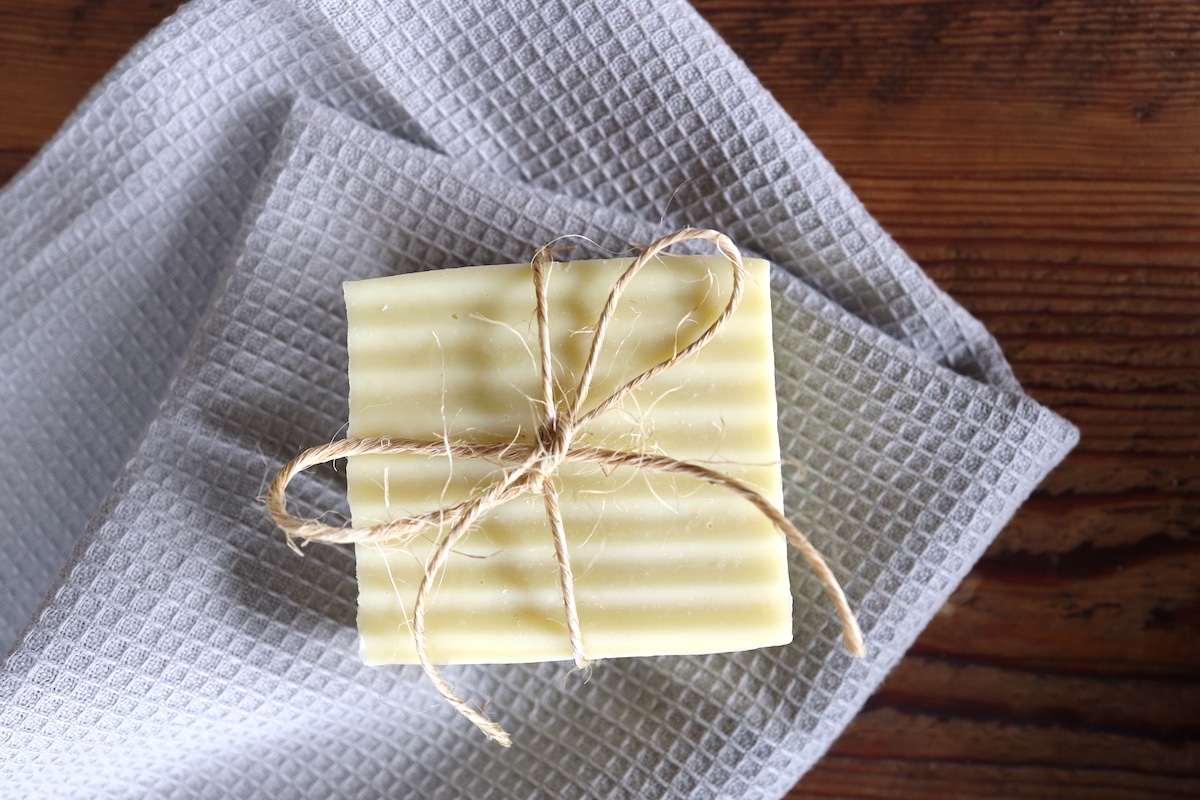
That’s when I stumbled upon this recipe for tallow shampoo bars and gave them a go. After making a few tweaks to the recipe, it’s been four years and we still love and solely use these shampoo bars.
How to Make Tallow Shampoo Bars
While making shampoo bars, or any soap for that matter, may sound intimidating, the process is really quite simple with the right tools, ingredients, and following a few important safety procedures.
If you are getting started with soap making, there are a few necessary start up costs, like lye and a soap mold. But once you stock up on the needed ingredients and equipment, we’ve found they quickly pay for themselves in the amount of soap that can be made!
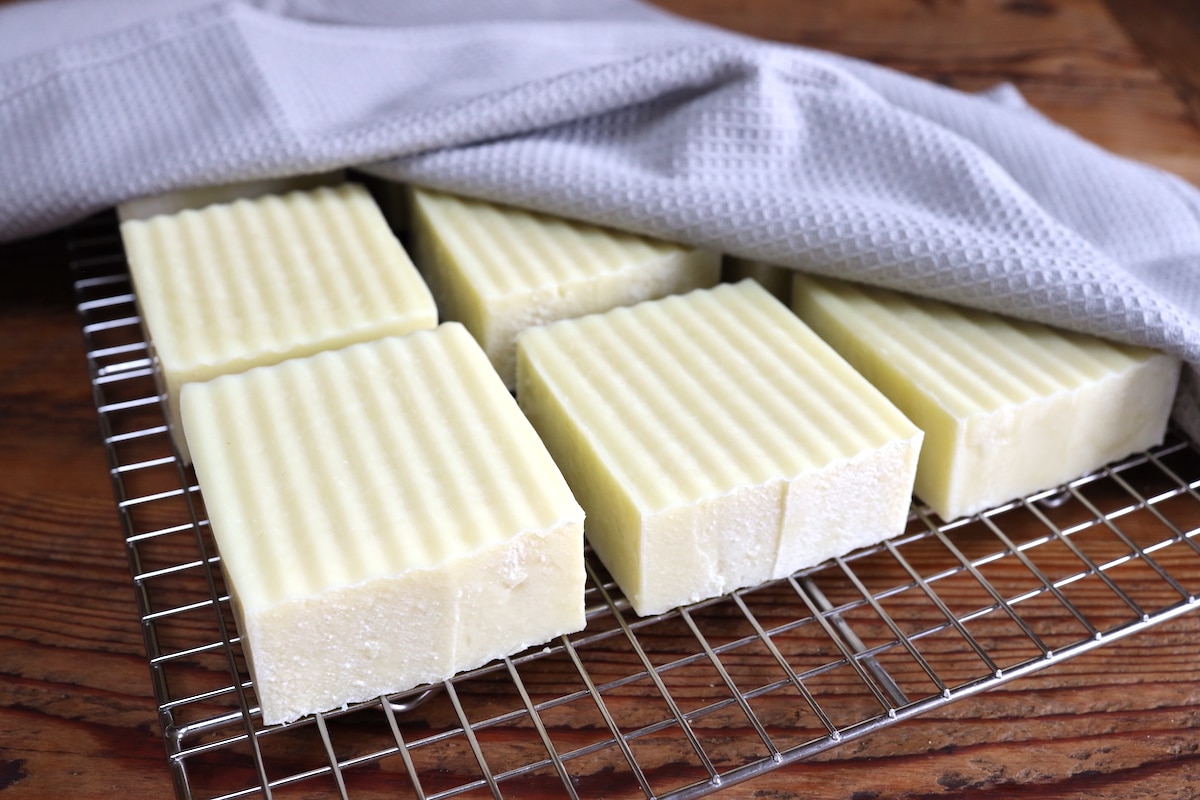
Ingredients Needed:
Olive Oil
Anytime you are purchasing olive oil, it’s important to find a high-quality olive oil. We have a friend from Greece that has her own business selling olive oil from her family’s olive orchards. Her number one tip when buying olive oil is to look on the label and only buy olive oil that says it is from one country. Often, the label will list a few different countries, which she says is a red flag for potential adulteration or a less quality product.
Coconut Oil
Coconut oil is helpful to give these bars lots of lather that you want in a shampoo. We buy ours from Costco.
Tallow
Tallow is rendered beef fat (suet). High-quality, grass-fed tallow is ideal for maximum nutrients. We purchase our tallow from local farms or butchers. If you don’t know of a local farm in your area, check localharvest.org to find a farmer nearby. Sometimes you can find already rendered tallow. If not, purchase suet (beef fat) to render down to tallow yourself. The process is simple—it just takes some time. We follow this wet method for rendering to eliminate any beefy smell.
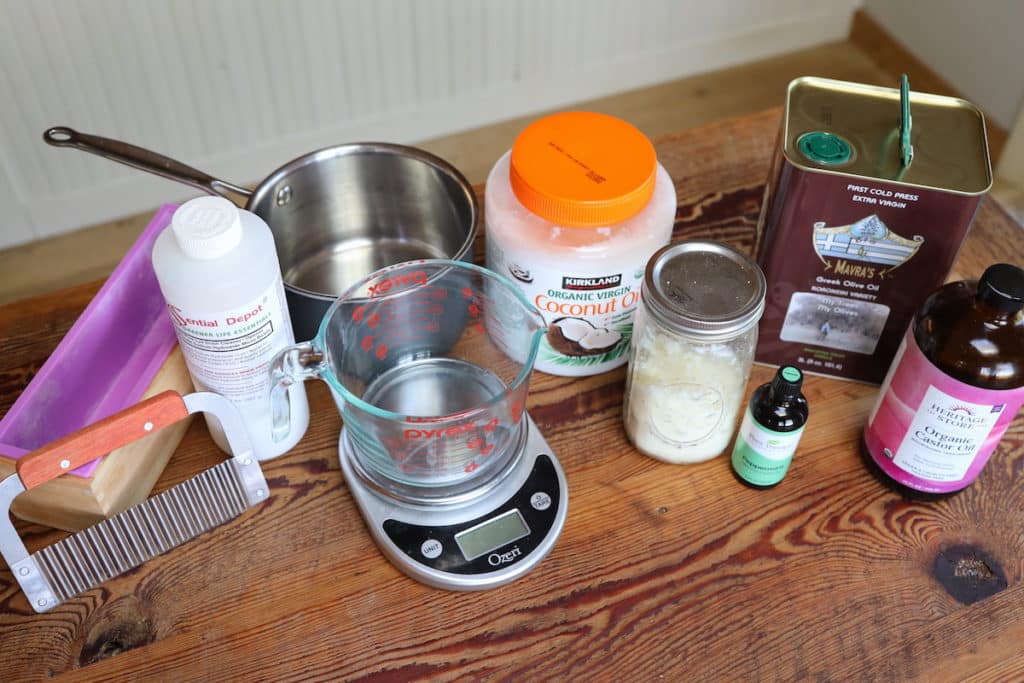
Castor Oil
Castor oil is high in ricinoleic acid and much anecdotal evidence sings the praises of using castor oil on hair. Look for castor oil in a dark glass jar for avoiding rancidity. We purchase this organic castor oil for making these shampoo bars.
Lye
Soap is made by combining oils together into a hard bar. This process is called saponification, which requires and alkaline agent in order for the chemical reaction to take place. This is where lye comes in. Lye is used to saponify the oils to creating a firm bar of soap. We use this lye.
Essential Oils (optional)
There are a few specific essential oils that are known for being beneficial for hair. You can use whatever blend that you’d like. We typically use peppermint essential oil. Our favorite place to purchase quality essential oils is Plant Therapy.
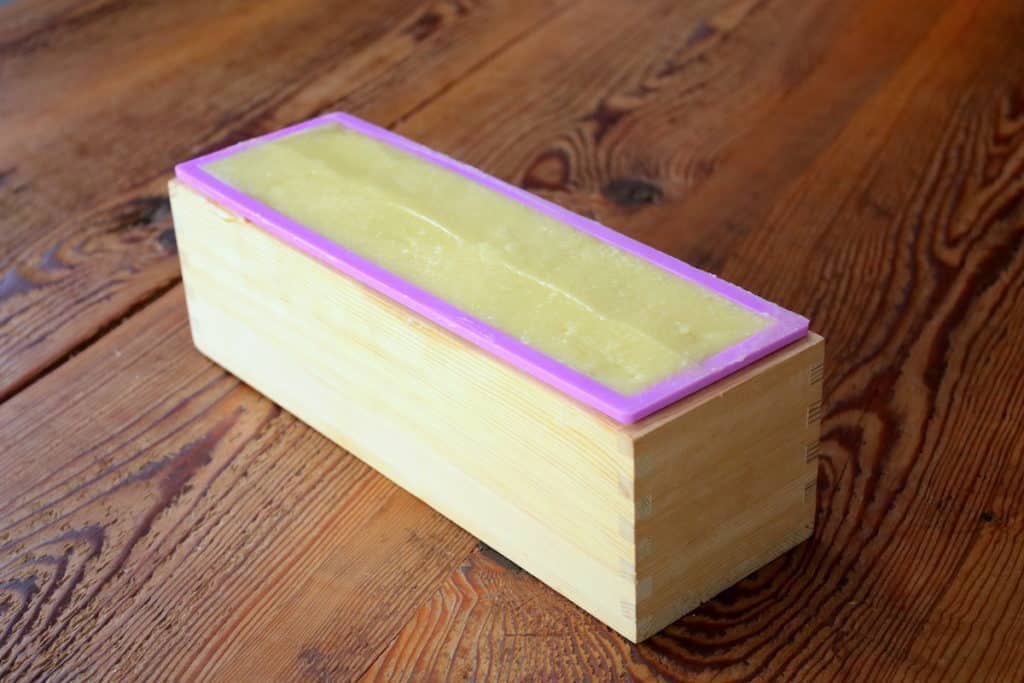
Equipment Needed:
Scale
Safety Goggles
Safety Gloves
Immersion blender (blender or food processor could work too)
Soap Mold
Soap Cutter
Tallow Shampoo Bar Recipe
Yield: 8 bars
Ingredients:
10 oz Olive Oil
10 oz Coconut Oil
10 oz Tallow
6 oz Castor Oil
13.7 oz water
5.1 oz lye
1 tbsp Essential oils (optional)

Directions:
1. Measure out all 4 of your oils and place in a medium saucepan.
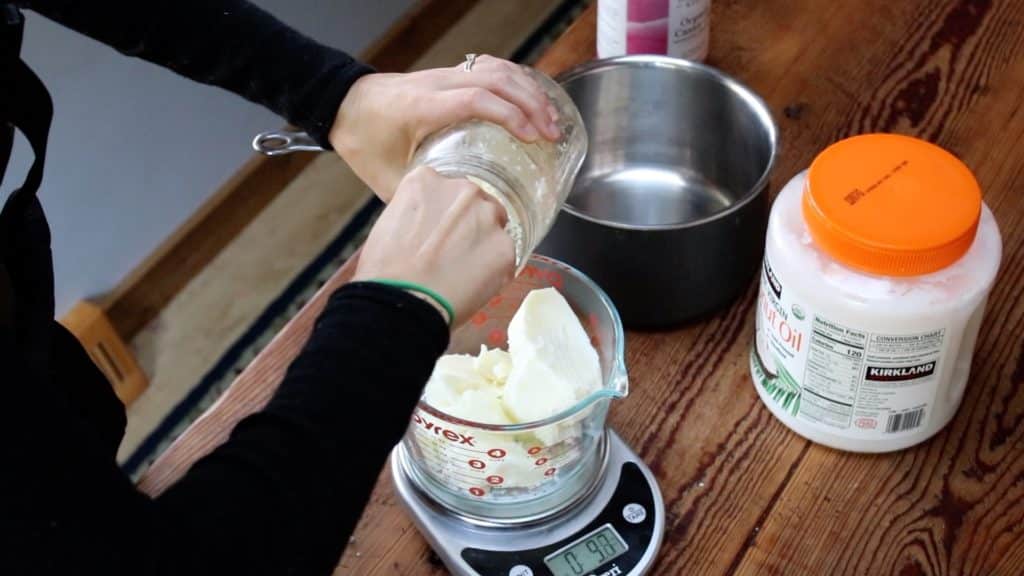
2. Melt olive oil, coconut oil, tallow, and castor oil over med-low heat until melted.
3. While the oils are melting, measure out water in a food grade plastic bucket or stainless-steel bowl (avoid glass because the heat produced in the lye reaction could cause cracks in the glass).
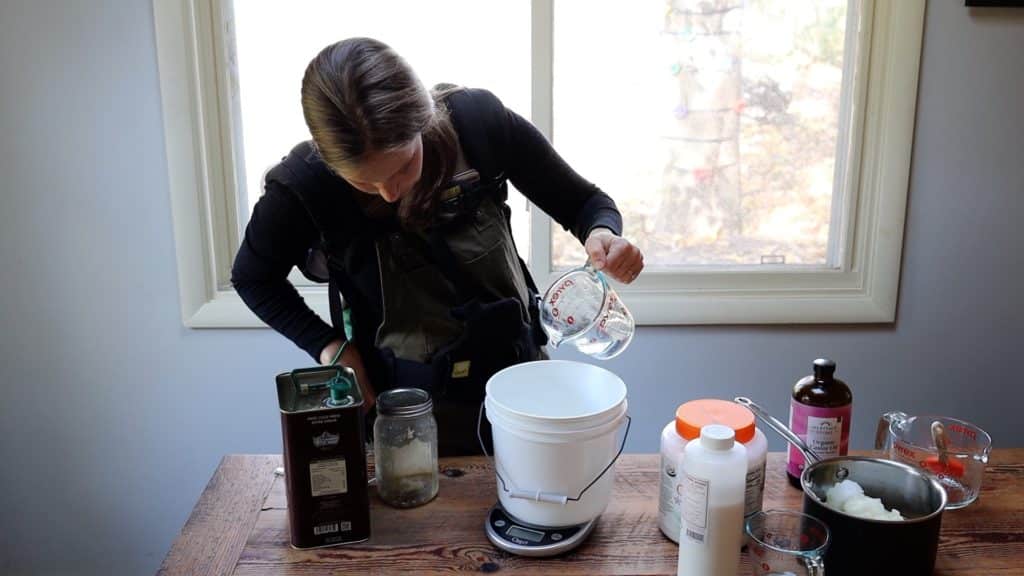
4. Measure out lye.
5. Once the oils are melted, allow to cool to 100°F. We like to put the saucepan in the fridge to speed this up.
6. While the oils are cooling mix lye solution. We always do this outside while wearing protective goggles and gloves. Slowly pour the lye into the water (never the water into the lye). Stir continuously with a stainless-steel spoon (not wooden).
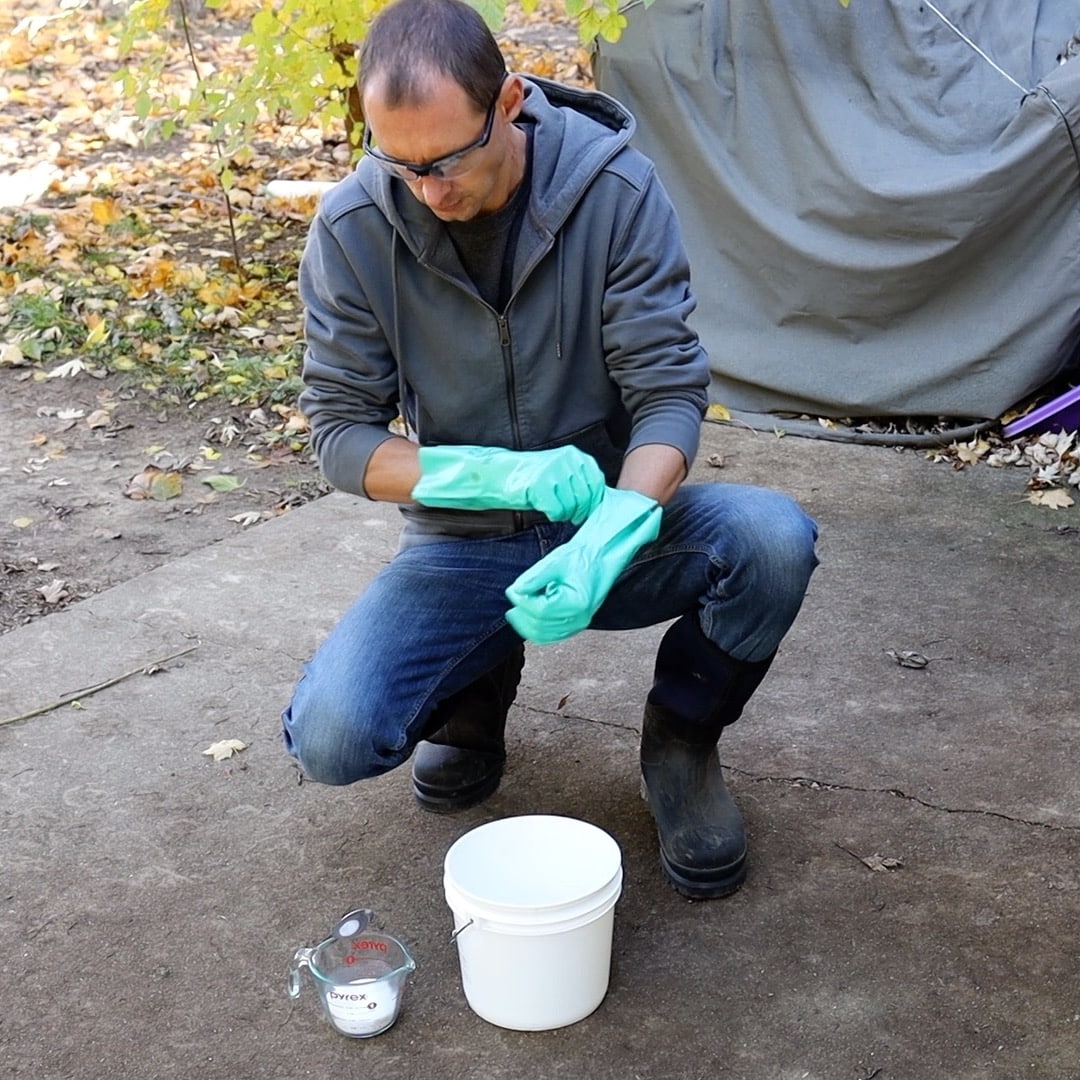

7. After the water/lye solution is gently but completely mixed, set aside for 10 minutes to cool.
8. Slowly pour the lye solution into the oils and blend with an immersion blender until a vanilla pudding consistency is formed. Don’t over blend.
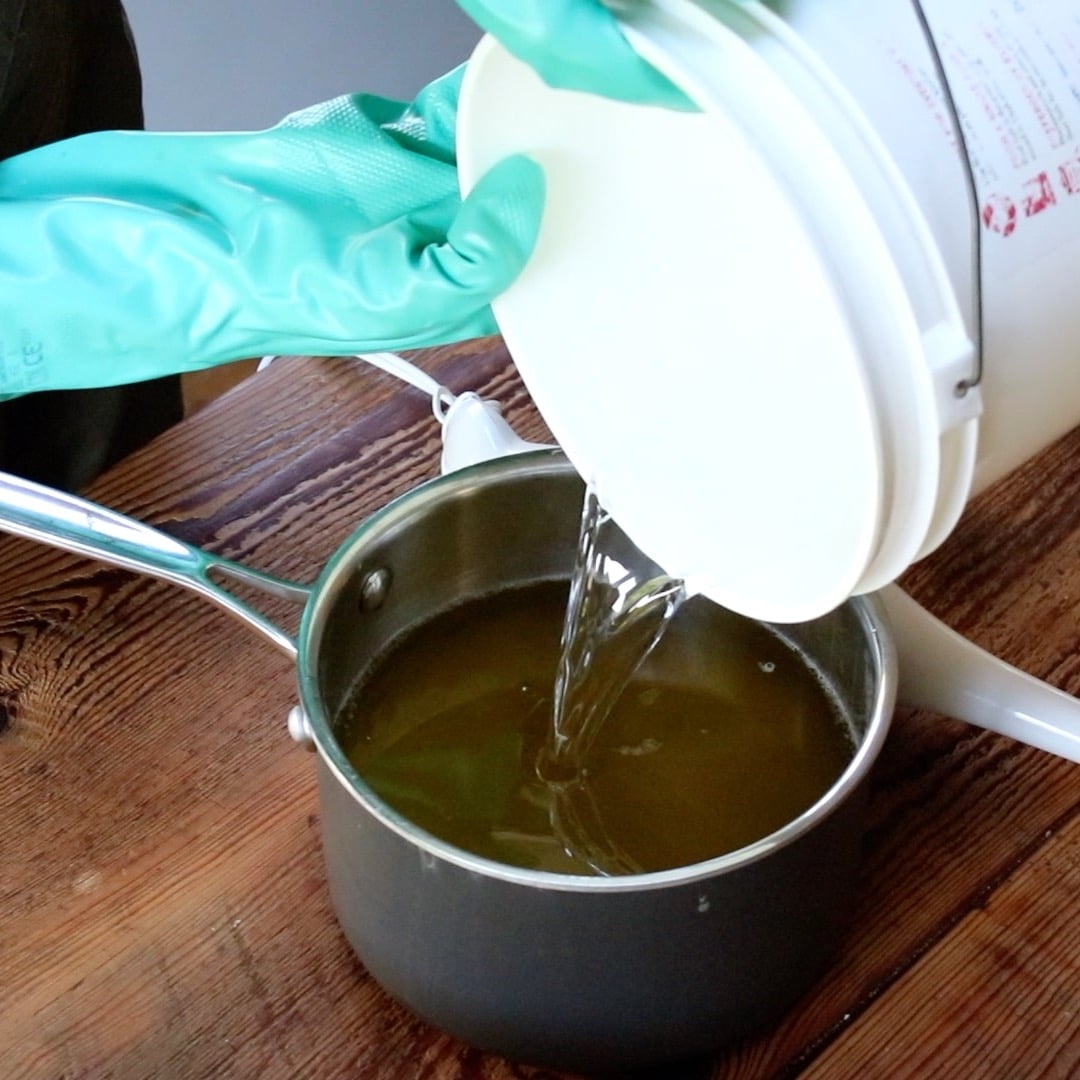

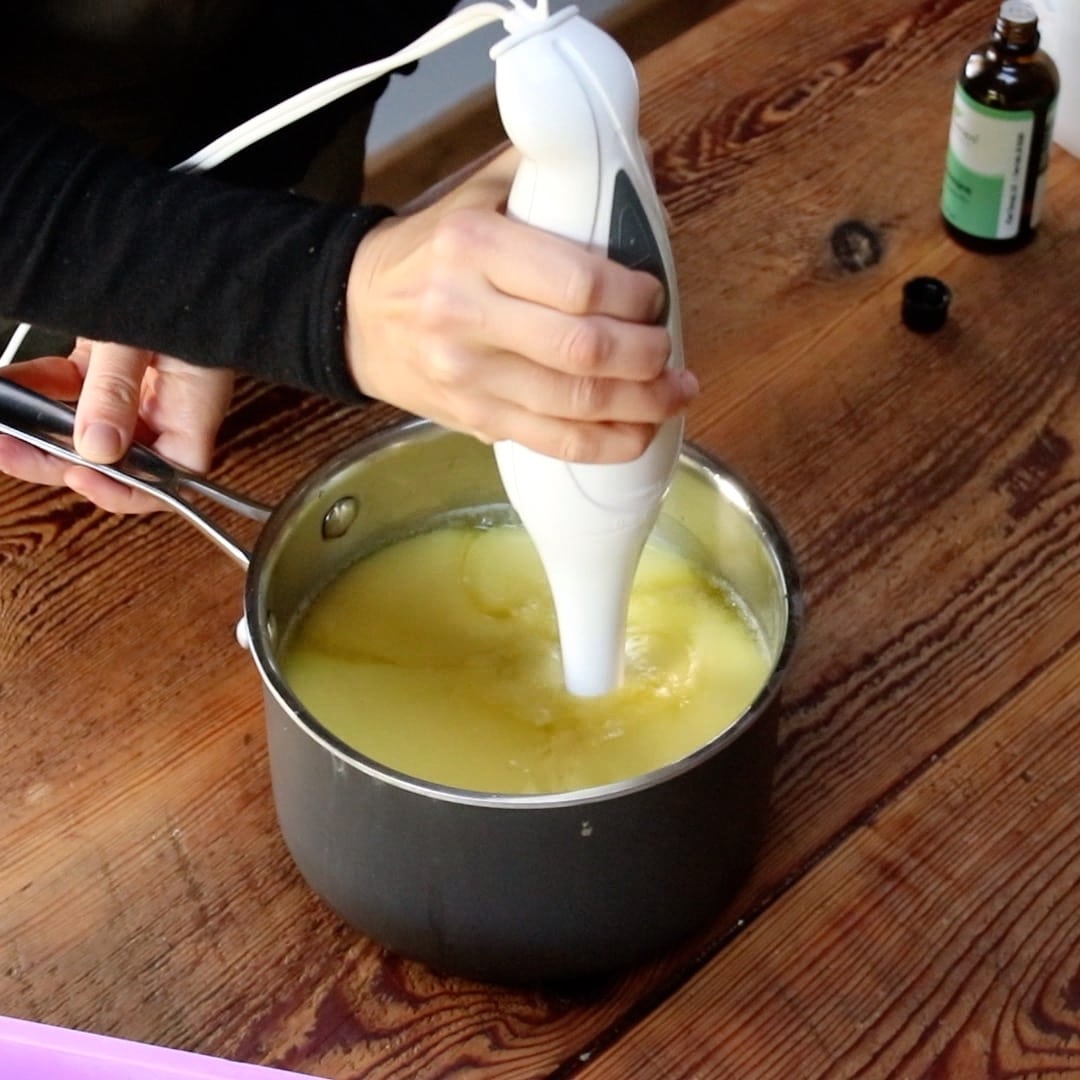
9. Add in essential oils and briefly mix in.
10. Pour into soap mold. You can cover with wax paper and flat object on top if desired overnight.

11. 24 hours later, remove soap from the mold and slice into 8 bars. We do this by cutting in half, then cutting the halves into quarters, and finally into eighths. Set on a cookie rack with a towel over it for 4 weeks to cure before using. This will allow the soap to harden and be firm enough to use.
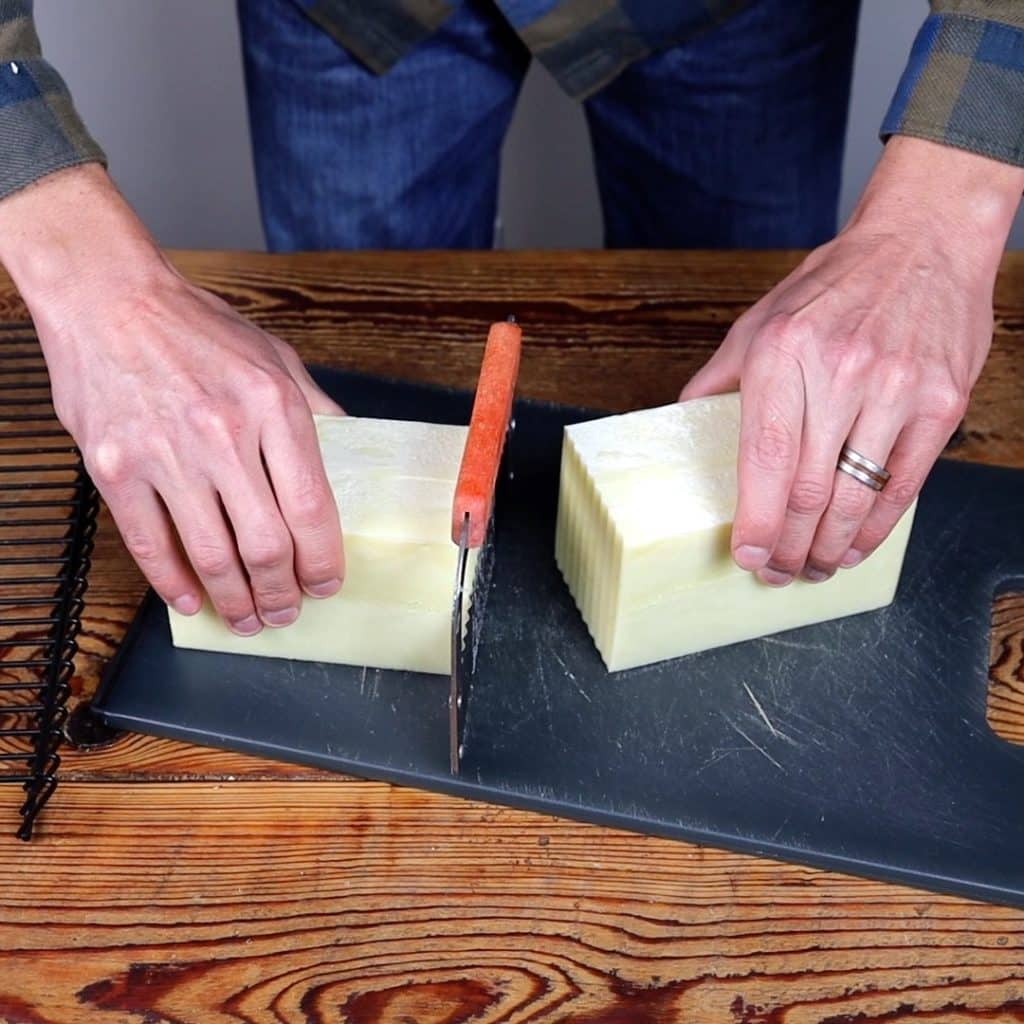

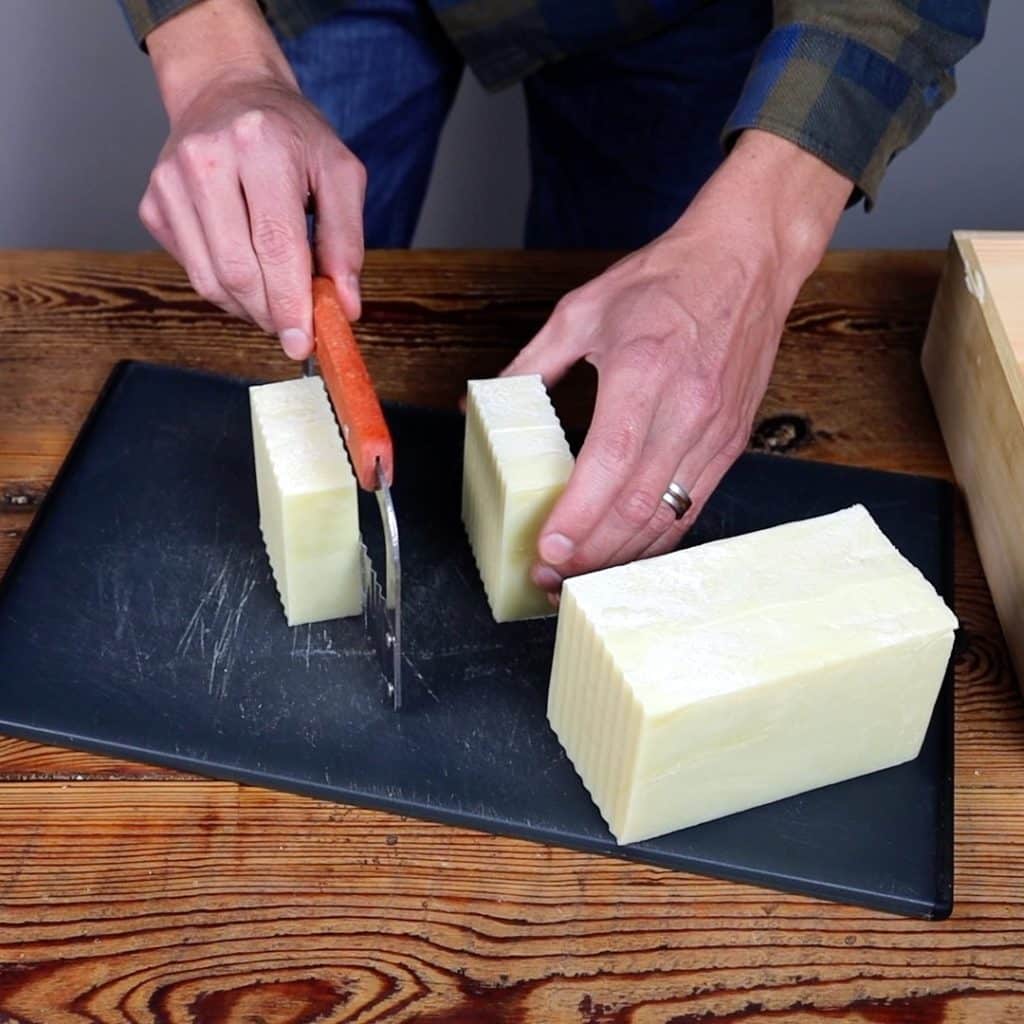
Some of the above links are affiliate links. This means we earn a small commission on qualifying purchases at no cost to you. We are so appreciative of your support!
Tallow Shampoo Bar Frequently Asking Questions:
How do shampoo bars work?
Shampoo bars are essentially soap bars with specific formulas designed to benefit and clean hair. Once wet, they are activated and will create a lather to clean your hair and scalp. Only a few swipes of the shampoo bar are needed.
Is there a lather?
Yes! This is one of my favorite parts about these shampoo bars. As opposed to many other natural options that do not produce a lather, these do and feel luxurious.

Can I go from using standard shampoo to these shampoo bars?
Commercial hair products use synthetic chemicals to help give hair its shine. However, over time these synthetic ingredients can build up on hair keeping hair from being able to absorb moisture and turning it dry and brittle. Before making the switch from a commercial shampoo to this tallow shampoo bar, a hair detox may be in order.
What about conditioner?
Honestly, we’ve found that this tallow shampoo bar works great as both a shampoo and conditioner. However, I’ve talked to others who use this shampoo bar alongside an apple cider vinegar rinse or a homemade dry conditioner.
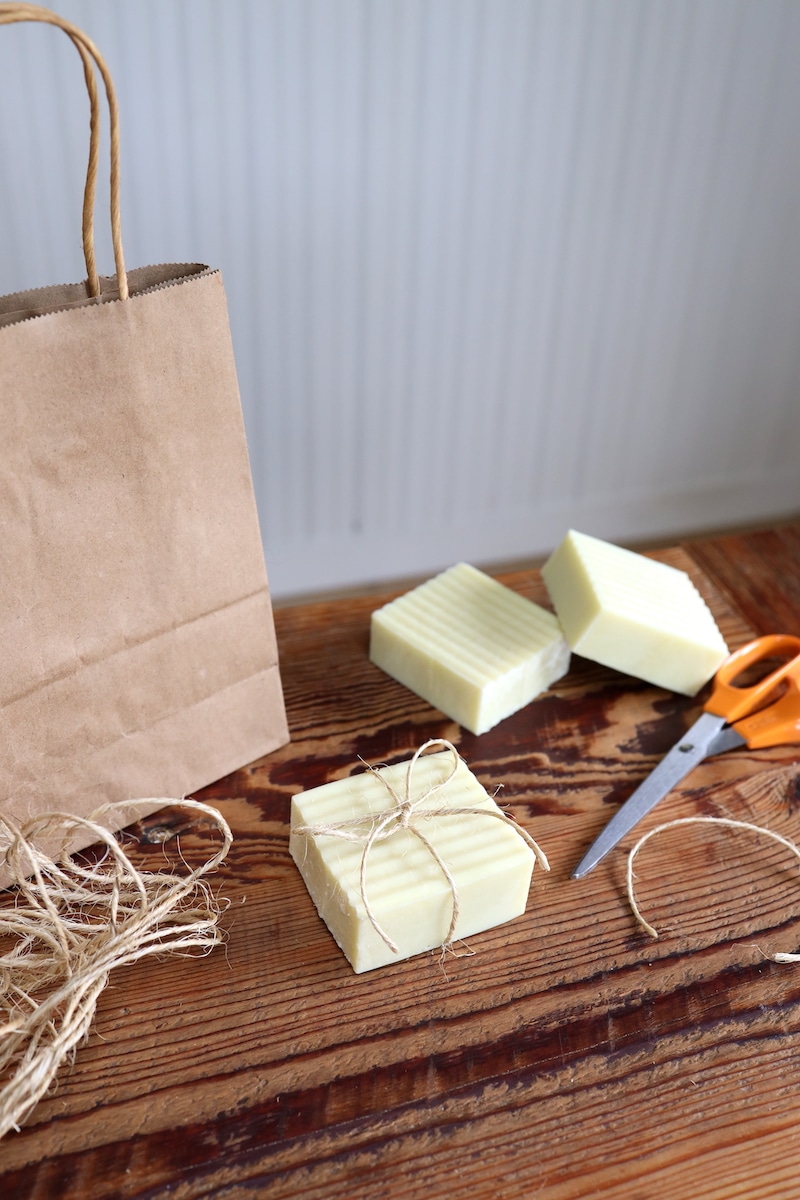
Can you use these shampoo bars for other things?
Yes! Because this shampoo bar is essentially a concentrated soap, it makes a great body soap as well. I’m also experimenting with using it as a dish soap bar for a zero-waste dishwashing option.
Who are shampoo bars for?
These shampoo bars can really be a one-stop-shop for the whole family! Since we’ve started making them, Jim and our kids have started using them for shampoo and body wash.
What’s been your experience with natural shampoo options? Have you tried shampoo bars? We’d love hear what your experience has been! Let us know in the comments below.

DIY Tallow Shampoo Bar
Are you in search of a natural shampoo that actually leaves your hair feeling clean, shiny, and smooth? After years of dealing with that exact scenario, I began making this tallow shampoo bar and it has been the perfect solution. With just a handful of ingredients, I’ll walk you through how you can make them yourself!
Ingredients
- 10 oz Olive Oil
- 10 oz Coconut Oil
- 10 oz Tallow
- 6 oz Castor Oil
- 13.7 oz water
- 5.1 oz lye
- 1 tbsp Essential oils (optional)
Instructions
- Measure out all 4 of your oils and place in a medium saucepan.
- Melt olive oil, coconut oil, tallow, and castor oil over med-low heat until melted.
- While the oils are melting, measure out water in a food grade plastic bucket or stainless-steel bowl (avoid glass because the heat produced in the lye reaction could cause cracks in the glass).
- Measure out lye.
- Once the oils are melted, allow to cool to 100°F. We like to put the saucepan in the fridge to speed this up.
- While the oils are cooling mix lye solution. We always do this outside while wearing protective goggles and gloves. Slowly pour the lye into the water (never the water into the lye). Stir continuously with a stainless-steel spoon (not wooden).
- After the water/lye solution is gently but completely mixed, set aside for 10 minutes to cool.
- Slowly pour the lye solution into the oils and blend with an immersion blender until a vanilla pudding consistency is formed. Don’t over blend.
- Add in essential oils and briefly mix in.
- Pour into soap mold. You can cover with wax paper and flat object on top if desired overnight.
- 24 hours later, remove soap from the mold and slice into 8 bars. We do this by cutting in half, then cutting the halves into quarters, and finally into eighths. Set on a cookie rack with a towel over it for 4 weeks before using. This will allow the soap to harden and be firm enough to use.
Notes
Equipment Needed:
Scale
Safety Goggles
Safety Gloves
Immersion blender (blender or food processor could work too)
Soap Mold
Soap Cutter
Pin it for later!

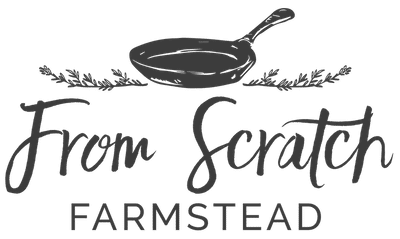

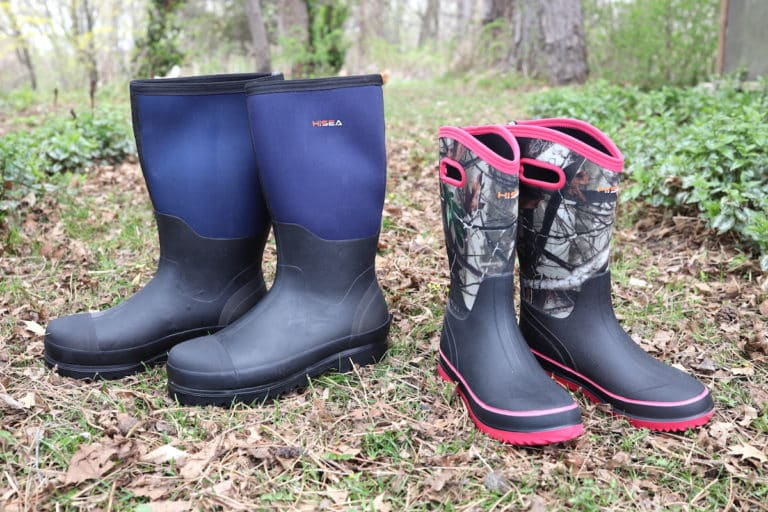
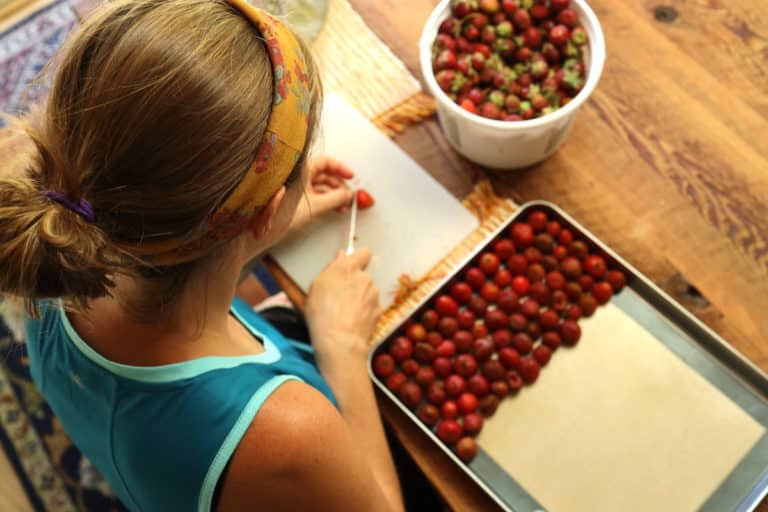
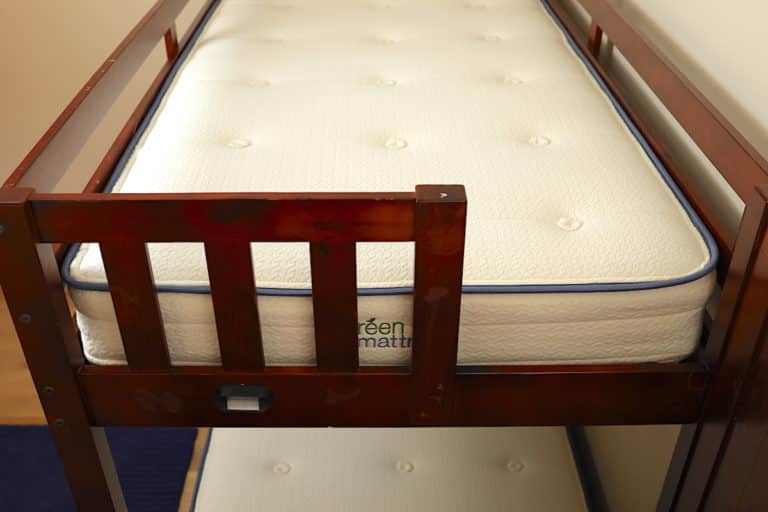
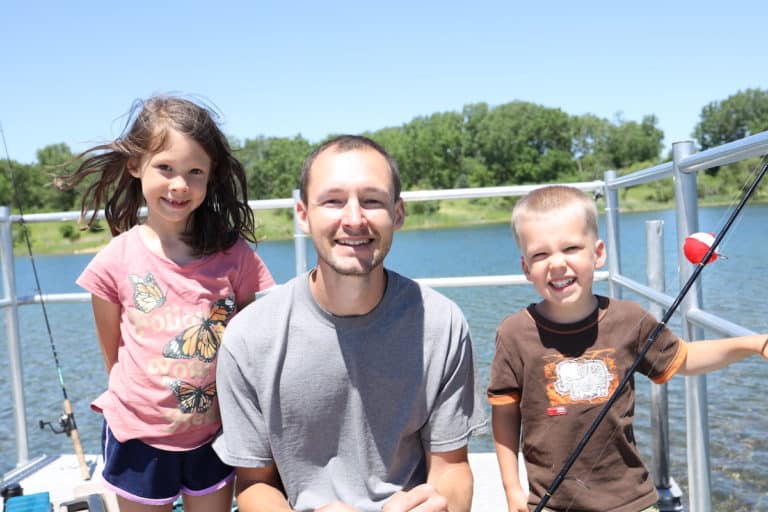
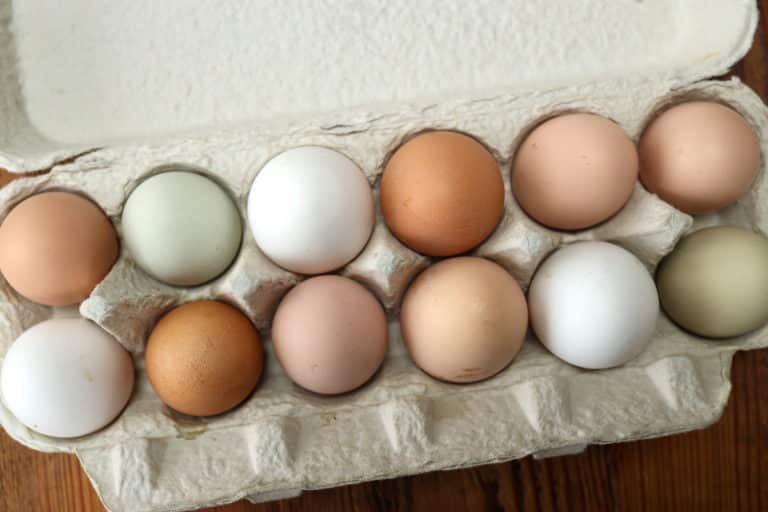
you said you sell your shampoo bar
how much would you like for four bard?
we would even take the ends,
Hi! Thanks so much for your interest! Right now we are only selling locally and not shipping. It has been on our list for a long time but we just haven’t had capacity to make it happen.
Please let me know when you ship soap. I’m in Texas. Thank you
Hi! We’ll make sure to get the word out if we start shipping. Thanks for your interest!
I would like to try it before I invest in the supplies! I think it might be the castor oil solution for my hair and face issues.
I hope this works well for you! You could check Etsy to find a similar bar to try it first before making it yourself.
Yes, I’m in Texas too!
I would also love to purchase some shampoo and soap. I could pay for shipping and would love 4 bars and would take the ends as well.
Hi! Thanks so much for your interest! We’d love to be able to ship but our little family just doesn’t have the capacity right now. I’d check on Etsy to see if there is a similar shampoo bar there.
I plan to start making these. However, I will need to allow for cure time. You can check me out on Facebook @ The Wild Olive Soapery.
I’m sad to find out that you only sell locally. Here is a short story: Back in the mid 90’s I noticed a white film on my hair, being confused what it was because I just washed it so I washed it again and again and again and so on for about two I washed my hair a few times a day in the hottest water my scalp could stand than rinsed it in the coldest water I could stand to get rid of that residue. I quit using conditioner and very picky on the shampoo I use now and don’t use very much, I can’t stand the residue/taste on my face and lips that it leaves. So sense the mid 90’s I can rightfully say I have been looking for a good all around soap to use for everything I just don’t have the means to make it my self. Thank you and hopefully you will one day you will be able to expand.
Oh wow! I’m so sorry for what you’ve been dealing with. That doesn’t sound fun at all! We’d love to be able to ship, unfortunately we don’t have the capacity right now. I’d check on Etsy for a shampoo bar with similar ingredients!
I plan to start making these. However, I will need to allow for cure time. You can check me out on Facebook @ The Wild Olive Soapery.
Hope you love them!
I use bar shampoo now. I would like to make my own. I have very fine hair and find that some of the oils you are adding may make my hair oily and weighed down. Do you know of others who can speak to this who have used your shampoo?
Hi there! My mom has very fine hair as well and she has been using this shampoo bar for years now with no issues and really enjoys it. My hair is thicker so I can’t speak to it personally but I don’t find that it makes my hair oily at all. I usually go one week between washes and don’t use any conditioner and it holds up really well! Hope this helps!
I would love to try this but I am concerned about the oils clogging my shower drain. I’ve had trouble in the past with build up in the drain when using natural oils for hair treatments. Your thoughts? Do you have a place you can recommend for buying lye?
We’ve been using it for years and we’ve never had issues with the oils clogging the drain. I believe this is because instead of straight oils, the saponification process of turning the oils into soap changes the product so it doesn’t have the same effect with clogging drains as the straight oils would. In the post, we link the lye we’ve purchased for this! Hope this helps!
Just pour some vinegar after using something very oily
Yes! A vinegar rinse can work really well!
Hello, is this soap good for washing men beard?
Hi there! We don’t have any bearded men in our house, so I couldn’t tell you from experience but we love it for hair! Let us know if you try it.
I make my own lye with wood ashes so it is already a liquid. Do you know how much I would need to use. I make it till it floats and egg so it is strong. I am thinking the 13.7 oz as that is the water amount?? thoughts?
Oh, great question and that’s very cool! I’ve never experimented with making my own but I think keeping the same amount of water would make sense if you believe it’s similar strength. Let me know how it goes!
What is the size of soap mold? Thank you for sharing. God bless you.
You’re welcome! Our soap mold is 42 ounces!
I am currently in my first trimester with baby number 8. I have all the ingredients, and would love to give it a try, but i know castor oil is not great to use when u are prego. Have u used this shampoo bar while pregnant? And u did worry at all about the castor oil? I’m kind of guessing that u used it when u were pregnant, because u have a little on your back! Thanks for the recipe and info!
Hi! Congratulations! I would stay away from ingesting it or even doing castor oil packs but I did use it throughout multiple pregnancies and haven’t had any issues! All the best to you!!
Great!! Thanks so much!!
Hello! We have a lot of lard on hand, which I’ve used to make soap with before, but I was wondering if you know if I could use lard instead of tallow in this recipe with the same ratios? Thank you so much!
Yes! You could definitely substitute lard for tallow!
Hi! I am interested in making this recipe. It sounds amazing, and I’m trying to get rid of putting chemicals on and in my body, as much as possible. What size food grade bucket are you using? Thank you! Lori
Hi! The food grade bucket we used is 1 gallon. I hope you love the soap!
Thank you very much for sharing. I’m just starting soap making so I’ll definitely try this recipe. I have rendered suet for tallow so all set. Looking forward!
Wonderful!! I hope you really enjoy this soap!
How long does the soap keep for?
It will store well for several months!
As a girl growing up (50s & 60s) Grandmother taught me and my sisters to care for our very long hair by: once a week, wash with home made lye soap (she made) or Dove (back before the additives), vinegar to rinse, comb out starting at the bottom work your way up. Throughout the week brush with a natural bristle brush 100 strokes (this distributes your natural oils).
Now a days when you ask a (Hair Specialist) about getting the natural healthy hair, they say it’s all product. They are never taught anything else. I would love to buy your product when you start mailing. Thank you
I love this so much!! What a wise grandmother you had and I love that that was your experience.
Are the ounces listed for all the ingredients weights or fluid ounces?
Good question! They are weights!
I know that you are only selling your shampoo bars locally but what I’m wanting to do is try out the shampoo recipe before going all in and making several bars. Do you know of anyone else that would be willing to sell a bar just so I could see if it is what I’m really wanting. Thanks so much for all the information!
Hi! You’re so welcome! I’d try looking on etsy – I’m sure there’s a similar option on there to try!
Would you happen to know how long the finished bars would last and the best way to store them?
Hi! They’ll last for several months! We just store them in an airtight container in a cabinet.
Hi Joelle,
Did you have batter left over once your mold was filled? The ingredients total almost 55 oz. so the recipe filled my 50 oz. mold plus 2 of those small pink silicon molds that say “100% Hand Made”. I can’t wait to try it out in a month or so.
Hi! Good question! Ours always fills the mold perfectly but it’s very full. All the way to the top or even slightly over. Using the silicone cups is a great idea though for the extra! I hope you love the soap!
Hello, thank you for your recipe.
Can this be made as a liquid form by leaving out the lye and just putting it in a bottle instead?
Hi! You’re welcome! I’ve never tried that but you’d have to only use select oils. The tallow and coconut oil are solid at room temperature so that wouldn’t work. I have heard of other having luck just using a drop of castor oil but I don’t have experience with this. Let me know if you find something that works well for you!
I absolutely live your channel. I am trying to healthier in the product and foods in my life. I would love to purchase your lye soap. Thank you.
Hi! Thank you so much for the encouragement! We aren’t currently shipping right now because of our families limited capacity but thank you so much for your interest!
Hi, does this soap work with hard water? With out creating the waxy build up?
Hi! We are on a well with a water softener. I have noticed on the occasions when we forget to add salt or the softener doesn’t run for whatever reason that I can definitely tell a difference in how my hair feels that I don’t prefer.
What can I use in place of coconut oil? I have a sensitivity to it!
Hi! Honestly, I haven’t tried experimenting with substituting out the coconut oil so I’m not sure what the best replacement would be. Sorry!
Babassu oil
Hello from Indonesia! I absolutely love watching your videos on homesteading and DIY skincare. Your content is both informative and inspiring! Regarding the shampoo bar, I was wondering if it’s possible to substitute lye with baking soda?
Hi there! Thank you for the kind words. Lye is essential in this recipe for the saponification reaction to occur and make soap. Lye is sodium hydroxide vs. baking soda is sodium bicarbonate. Lye is caustic and not safe for consumption but in soapmaking, the saponification process makes it safe for using as soap. Baking soda is non-toxic and great for baking. I hope this helps!